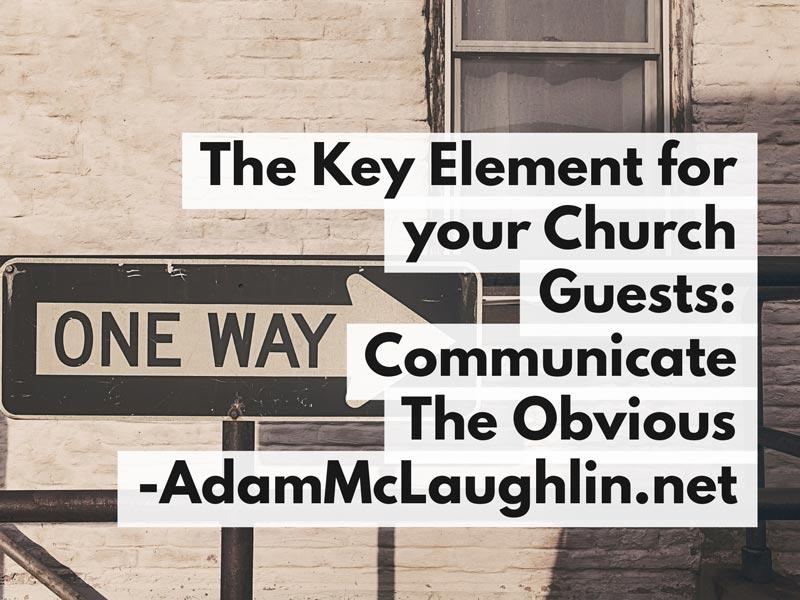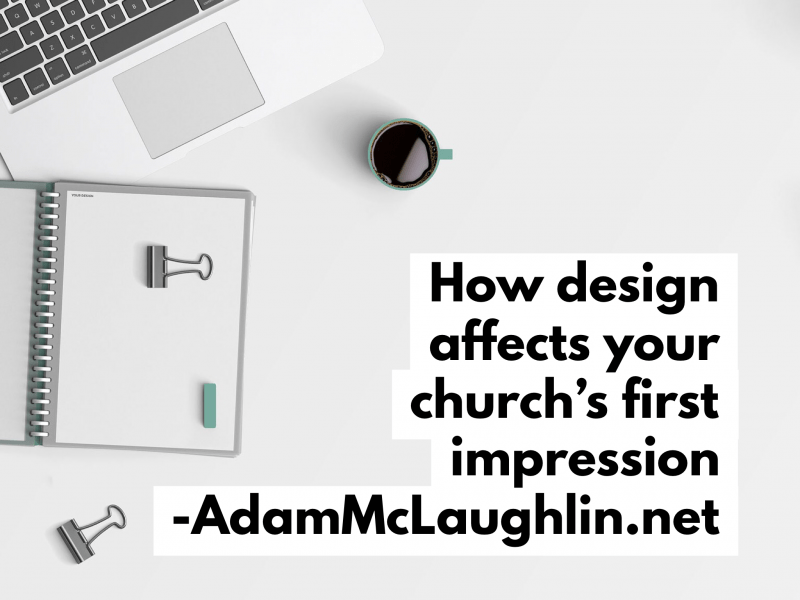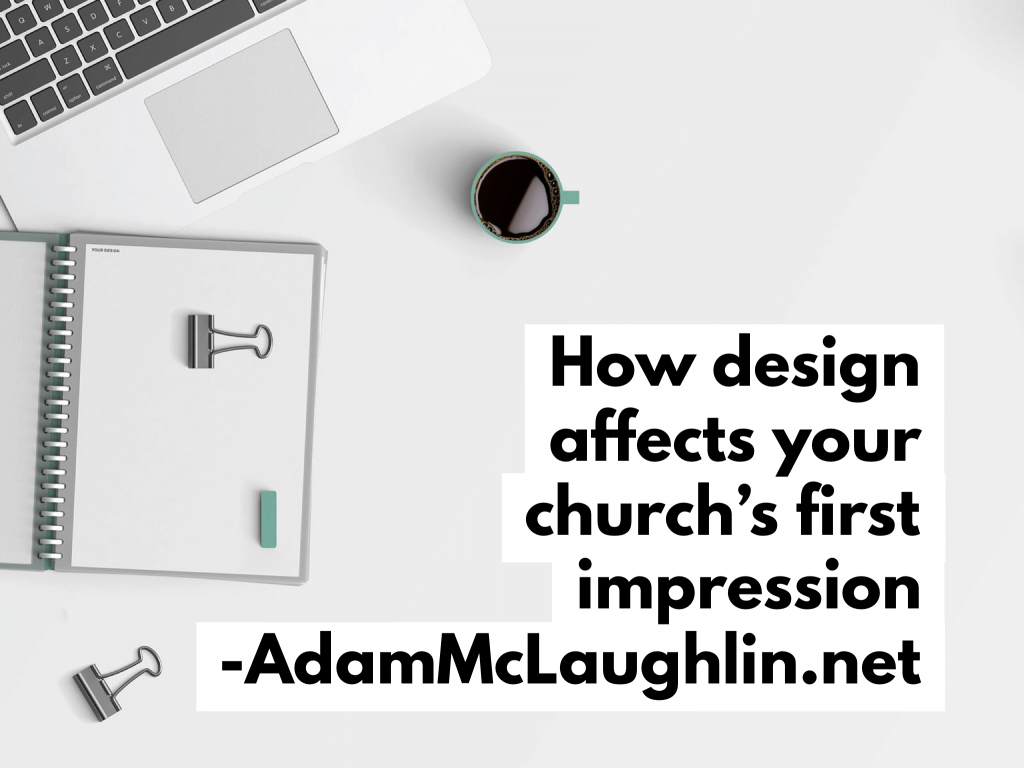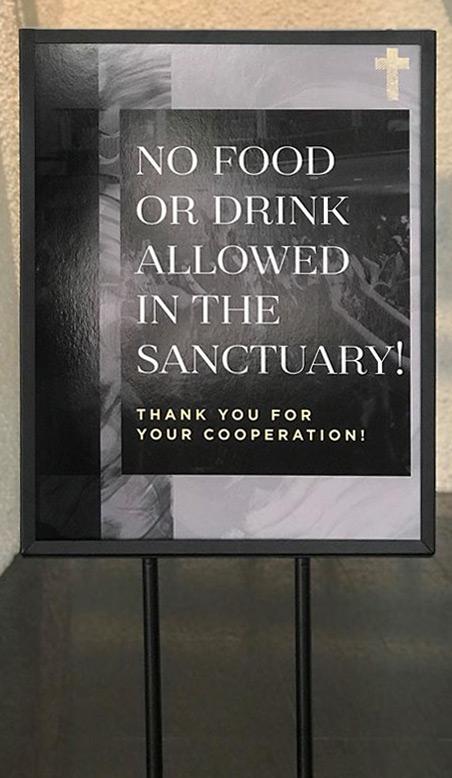
I was at a friend’s house once where they were pouring drinks for dinner. I was offered the milk and poured my drink first; A full glass. My friends’ brother looked at me like something was REALLY wrong. In their house, they only ever poured half a glass of milk, that way, if they spilled, they only lost half of a glass. To them, this was obvious (and it’s pretty decent logic) but for me, not obvious.
The challenge comes when we convince ourselves about what is within the obvious box, and the danger with the ‘obvious box’ is that over time, it keeps growing. As we get used to the systems and processes at our church, they become more ‘obvious’ to us, but that doesn’t make them more obvious to our guests.
Consider these ideas about church. As someone who grew up in church, they seem obvious to me, but take a moment and view them from the eyes of someone who has never been to church in their life, and walks through your front doors this weekend.
- We offer childcare during service.
- Children have a check-in process.
- We stand up when the music starts playing.
- We sing out loud as a group in public.
- We talk (or shout) back when a presentation is being made.
- There is a time during the week that our teenagers get together.
- We do this every Sunday, with the intention that everyone returns every Sunday.
- I need to fill out a ‘connect card’, and stop by a booth to pick up a gift
- I didn’t realize that I needed to fill out a card when it was my first time last week. Now it’s my second time, so I missed my chance to get that gift?
- When they’re talking about money and passing around a bucket.
- Is that coffee free?
- Which way do I go when I walk in?
- I want to learn more about Jesus, so I have to go buy a bible?
Recently, we visited Bay Area Community Church in Annapolis, and they gave us a magnet to take home after we checked our kids in (5 x 7 in size). Here’s a picture of the magnet:
This magnet gives us a clear understanding of our family’s faith journey could look like from now until the time our kids graduate college – It may seem obvious that at a certain age, we have a “Parent Dedication” or “Baby Dedication”, or that our kids will participate in a 4th and 5th grade retreat at that age, but this ‘map’ makes it that obvious that there is a clear plan and path for my kids to move from their current stages with intentional transitions to the next stages.
A few things I love about this idea that drives home Bay Area’s commitment to help my family’s faith journey:
- There are clear stages that both parents and kids can understand and follow along with
- There are resources provided along the way for parents to learn and grow
- There are tokens that the kids can have a hands-on experience as part of their journey
- There is a high frequency of “next steps”, not large gaps where families could fall through the cracks
- It’s clear when the transition happens from “kids” to “youth” (that arrow that says BASM – Bay Area Student Ministries)
What may seem obvious to you, is an important starting point for communicating to your first-time guests. Don’t take anything for granted or make any assumptions about what they know and how they’re expected to respond.


 I like browsing the grocery store to try things I’ve never tried before. I found this fruit called a
I like browsing the grocery store to try things I’ve never tried before. I found this fruit called a  I took a picture of a sign that greeted me when I walked in to visit a church. There’s no value to naming the church, but an opportunity for all of us to learn. (for the record, I asked their permission to post this picture)
I took a picture of a sign that greeted me when I walked in to visit a church. There’s no value to naming the church, but an opportunity for all of us to learn. (for the record, I asked their permission to post this picture)

 So, the married couples over 70 sky diving weekend may be a really important event to someone. It may be the way that a couple connects with someone who leads them to salvation.
So, the married couples over 70 sky diving weekend may be a really important event to someone. It may be the way that a couple connects with someone who leads them to salvation.